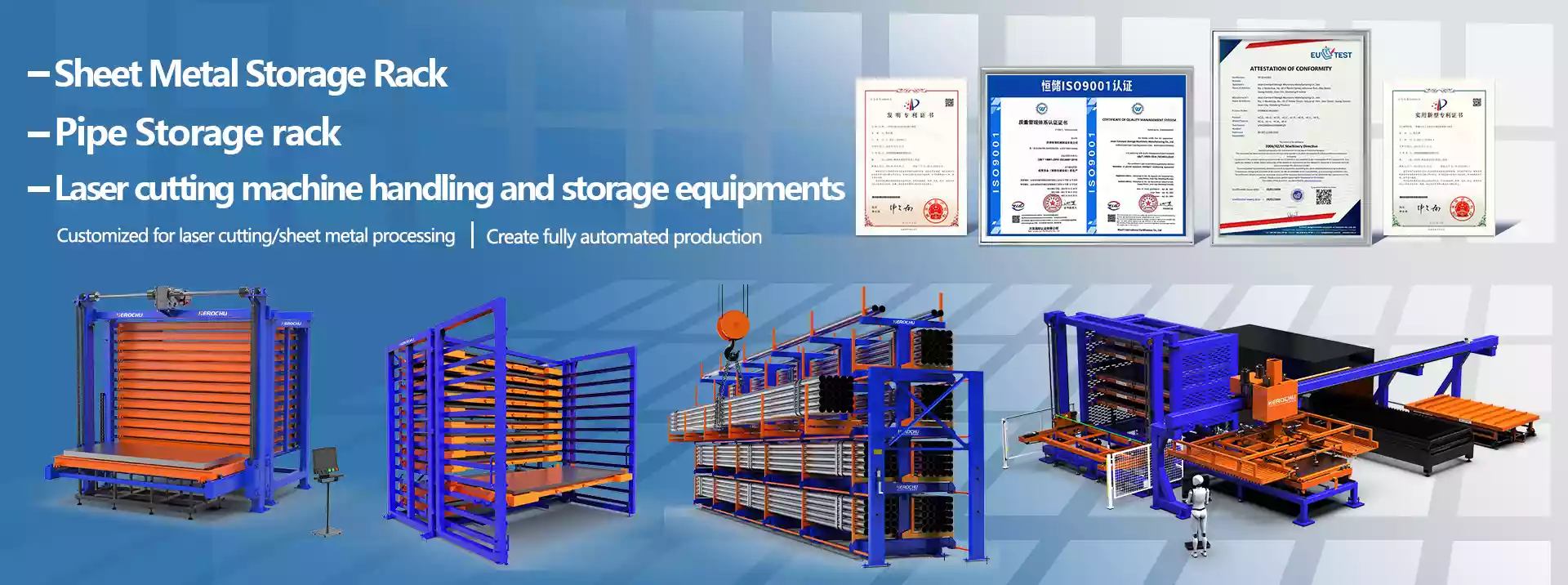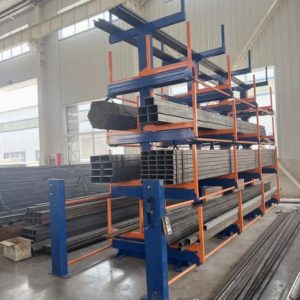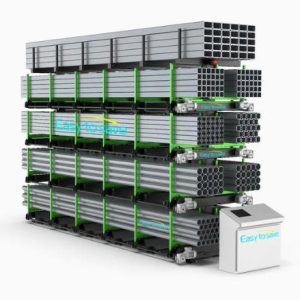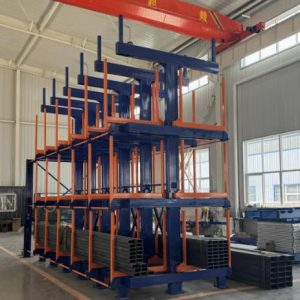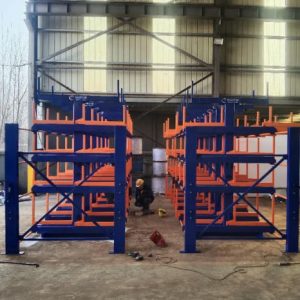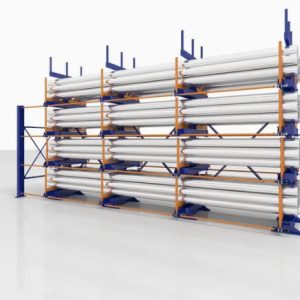Struggling with Cluttered Sheet Storage? How to Organize Your Warehouse and Improve Safety
Herochu Sheet-Steel Storage Rack | CE, UE, ISO 9001 | From USD 4,899
Floor stacking looks free until you add up the real bill: overtime spent re-stacking, sheet metal scuffed by fork-tips, and the sick-day cost of a crushed hand. Herochu’s vertical drawer rack erases that bill in one afternoon. Every level glides out like a CNC tray, giving instant, single-operator access to plates up to 12 m long while freeing 80 % of the floor you currently waste. Below is a field-tested guide to why the switch pays for itself faster than any laser upgrade you have on the capital list.
The hidden tax of “free” storage
A 5 t bundle of 4 mm hot-rolled sheet looks stable—until the operator needs the third plate from the bottom. The crane hooks the top bundle, swings it aside, and the whole stack drifts sideways. One dented sheet is scrap worth €180; one dented employee is worse. OSHA reports that 42 % of warehouse injuries in fabrication shops start with manual re-handling of plate or bar. The incident is recorded as an accident, but it is actually a design flaw: the storage system demands unsafe behaviour to do normal work.
Drawer racks change the behaviour. Instead of lifting the pile, you roll out the layer you need. The drawer stops at 100 % extension, locks mechanically, and presents the sheet at knee height—perfect for suction cups or magnetic lifters. No re-stacking, no walking on stock, no guessing weights.
How the drawer removes the crush zone
Each drawer rides on four sealed bearings running on induction-hardened rails. A 1:60 worm-gear crank multiplies input torque, so a 60 kg operator can glide 3 t (6 000 lb) without strain. The gearbox is irreversible: when the handle stops, the load stops—even if someone bumps into the drawer. Compare that to the floor-stack method where the last shimmy of a sling can topple half a tonne sideways.
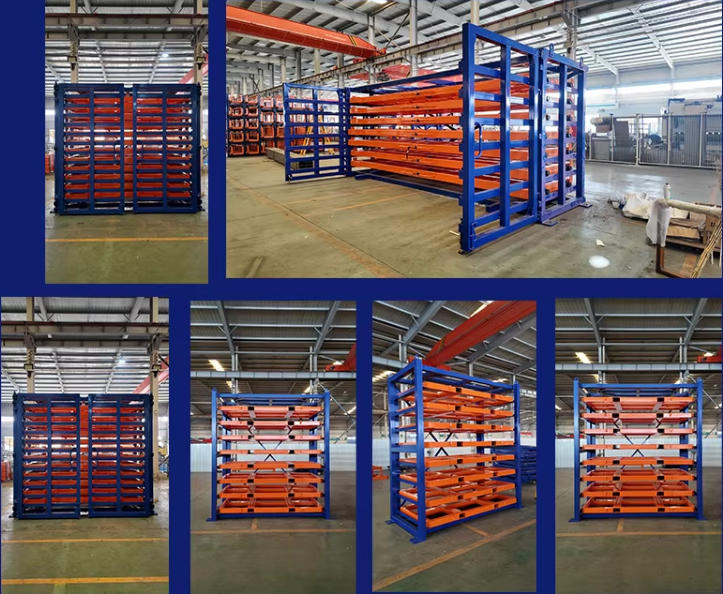
The rails are bolted to a laser-cut backbone that shares立柱 with the main frame. Welds are inspected to EN ISO 3834 Class 2; critical seams are ultrasonically tested. The result is a deflection limit of L/300 at rated load, which means a 2 m drawer loaded to 3 sags less than 7 mm—flat enough for an automatic loader to pick repeatedly without re-teaching coordinates.
Reclaim floor, reclaim daylight
A typical 2 000 m² fabrication shop keeps 400 m² blocked by random plate piles. Moving that inventory into a 6 m high drawer tower returns 320 m² of clear aisle—enough to add a second laser or a new welding cell without pouring concrete. At average European industrial rent the square metres saved pay for the rack in fourteen months, before you count faster throughput.
Vertical storage also lifts the sheets out of the dirt. Rust spots caused by condensation between floor and stack drop by 70 %, so primer consumption falls and paint-line rejection rates follow. One Danish job-shop documented €11 400 annual savings in rework after installing three towers—money that used to evaporate in the paint booth.
One crane, one person, two minutes
Time studies in a Dutch subcontractor show the full journey:
Floor stack – locate tag, clear path, sling top bundles, move aside, pick, re-stack: 28 minutes average.
Drawer rack – scan barcode, crank out drawer, attach vacuum lifter, lift: 2 minutes 10 seconds.
The 25-minute difference is machine idle time. On a 4 kW laser that equals €18 of lost beam time per sheet. Run twenty sheets a day and the rack saves €86 000 a year in laser productivity alone—five times its purchase price.
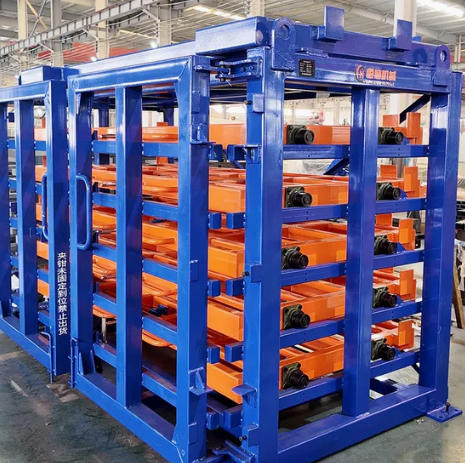
Safety auditors notice the difference
The rack ships with EU Declaration of Conformity to EN 13105-3 and CE machinery directive. Each level has a mechanical lock that prevents extension unless the operator deliberately disengages it, so drawers cannot drift open during crane pick. An optional photocell curtain halts travel if a foot crosses the 500 mm warning zone. These details turn safety audits into five-minute formalities instead of day-long defect lists.
Custom grids for any plate map
Standard bays handle 2 m, 2.5 m, 3 m, or 3.5 m widths; drawer height choices are 400, 550, or 700 mm so you can mix thin aluminium with 60 mm tread plate in the same tower. Load ratings run from 1 t to 3 t per drawer and up to 45 t total per bay. Need stainless? Arms and rails are available in 304 or 316L for coastal or food-grade sites. Need outdoor storage? Full hot-dip galvanising to EN ISO 1461 gives 85 µm zinc coating—20-year life without repaint.
Installation without civil works
Columns bolt to 20 mm base plates; anchor force is 18 kN per foot, less than a 2.5 t forklift wheel load. If your slab is older than the Beatles we supply 250 × 250 mm spread plates free. A six-drawer tower packs into one 20 GP container and erects in four hours with two techs and an overhead crane. No field welding, no torch cutting, no fumes.
Maintenance you will actually perform
Bearings are sealed-for-life, gearbox oil is checked once a year, and the hand-crank mechanism is greased through a single nipple. The only wear part is the polyamide gear ring, changed in 15 minutes with one spanner. Expected service life is 20 000 cycles—12 years at single-shift operation—after which the frame can be re-certified for a second decade.
ROI snapshot—real numbers, not marketing
Italian job-shop, 2023
Laser cutting: 8 h/day, 220 days/year
Plate turnover: 18 t/day
Floor stacking loss: 2.3 % scrap due to handling dents
After three Herochu towers: scrap drops to 0.4 %
Annual material saved: 37 t × €650/t = €24 050
Labour reduction: 1.2 FTE re-assigned → €42 000 wage saving
Total annual benefit: €66 050
Payback: 8.9 months
